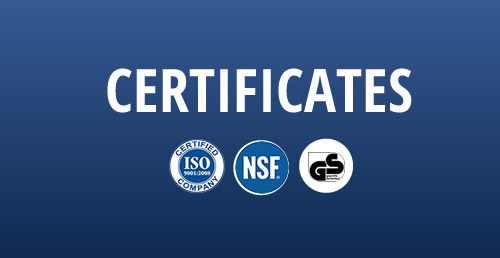double ended hex flange studs
Understanding Double-Ended Hex Flange Studs
In various mechanical and structural applications, fasteners play a vital role in ensuring the integrity and functionality of assemblies. Among the diverse types of fasteners available in the market, double-ended hex flange studs have gained considerable attention due to their unique design and versatility. This article will delve into the characteristics, applications, and advantages of double-ended hex flange studs, highlighting why they are essential components in engineering and construction.
What are Double-Ended Hex Flange Studs?
Double-ended hex flange studs are a type of fastener characterized by their two threaded ends and a hexagonal flange located at the center. The threads on each end allow for secure attachment to different components, while the flange serves several purposes, including providing a larger surface area for load distribution and acting as a visual alignment aid. The hexagonal shape on the flange facilitates easy tightening and loosening with standard tools, making these studs user-friendly in various assembly scenarios.
Key Features of Double-Ended Hex Flange Studs
1. Material Double-ended hex flange studs are commonly made from high-strength materials such as stainless steel, carbon steel, or alloy steel. The choice of material often depends on the application environment, as corrosion-resistant options are preferable in harsh conditions.
2. Versatility These studs can be used in a wide range of applications, from automotive and aerospace to construction and manufacturing, due to their ability to connect dissimilar materials and components securely.
3. Load Distribution The flange design not only enhances the stud's grip but also helps distribute loads more evenly across the surfaces being fastened. This characteristic minimizes stress concentrations and improves the overall durability of the assembly.
4. Ease of Installation The double-ended design allows for quick installation, as both sides can be fastened simultaneously. This efficiency is particularly beneficial in environments where time-saving measures are critical.
Applications of Double-Ended Hex Flange Studs
Double-ended hex flange studs find their application across various sectors
double ended hex flange studs

- Automotive Industry Used in engine assemblies, chassis, and transmission components, these studs provide the reliability required in high-performance vehicles.
- Aerospace Sector In aircraft construction, double-ended hex flange studs are utilized for their strength and lightweight characteristics, contributing to overall fuel efficiency and safety.
- Construction These studs are often used in steel and concrete connection points, ensuring structural integrity in commercial and residential buildings.
- Manufacturing In machinery and equipment assembly, these fasteners help connect parts that undergo high vibration and stress, ensuring longevity and performance.
Advantages of Using Double-Ended Hex Flange Studs
1. Increased Reliability The robust design and material strength of double-ended hex flange studs enhance the overall reliability of the assemblies they are used in, reducing maintenance and replacements.
2. Cost-Effectiveness By facilitating quicker installation and ensuring secure fastening, these studs can lower labor costs and improve productivity in various projects.
3. Enhanced Load Capacity The flange design allows for a higher load-bearing capacity compared to traditional fasteners, making them suitable for heavy-duty applications.
4. Reduced Risk of Loosening The design minimizes the chances of loosening due to vibration or movement, which is crucial in dynamic environments.
Conclusion
Double-ended hex flange studs are versatile fasteners that provide critical solutions across numerous industries. Their unique design, material strength, and ease of use make them valuable assets in engineering and construction. By understanding their features and applications, engineers and designers can make informed choices that enhance the reliability and performance of their projects. As technology advances, the significance of such fasteners in innovative applications will likely grow, further solidifying their place in the world of manufacturing and construction.
-
Weatherproof Plastic Expansion Anchors for OutdoorNewsJun.06,2025
-
Sustainability in the Supply Chain: Eco-Friendly TEK Screws ProductionNewsJun.06,2025
-
Load-Bearing Capacity of External Insulation FixingsNewsJun.06,2025
-
Double Head Bolts: Enhancing Efficiency in Industrial MachineryNewsJun.06,2025
-
Corrosion Resistance in Chipboard Screws: Coatings for Wholesale DurabilityNewsJun.06,2025
-
Butterfly Toggle Bolts : Enhancing Structural ResilienceNewsJun.06,2025
